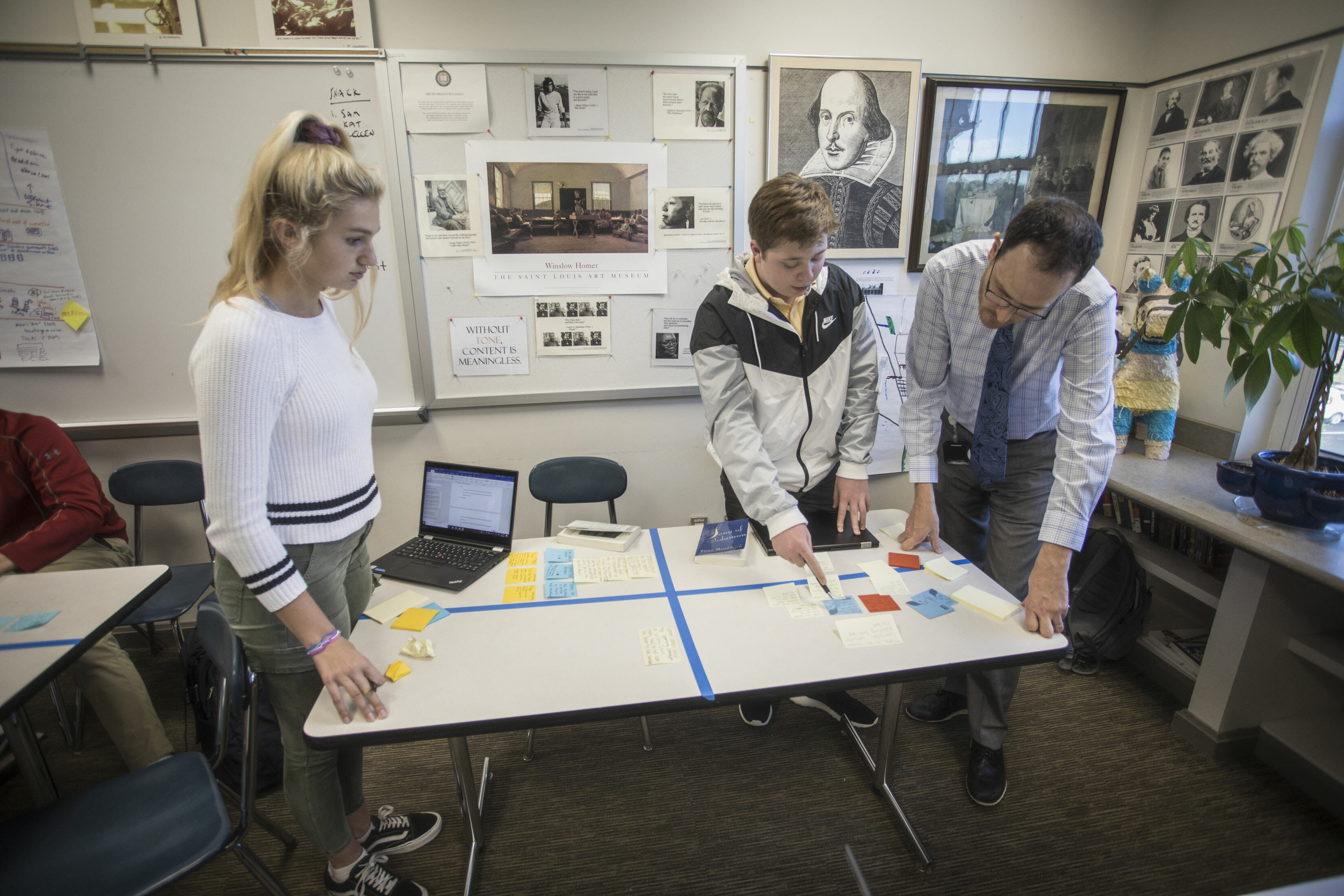We all know that our MICDS teachers are great educators here at School, but did you know that they’re also good resources for their peers? Dr. Jody Marberry, Middle School Math Teacher, and Mr. Tex Tourais, Upper School English Teacher, both offered presentations at last summer’s Summit for Transformative Learning in St. Louis (STLinSTL) and, from that, were invited to speak at another school. Created and hosted by MICDS, the STLinSTL conference offers educators opportunities to interact with keynote speakers and presenters in small group settings. Dr. Marberry presented on Feedback: What Works and Doesn’t Work From the Student Perspective, and Mr. Tourais spoke about Designing for the 21st Century Learner.
 One of the STLinSTL guests invited both Dr. Marberry and Mr. Tourais back to Blair Academy, a 9th-12th grade boarding school in New Jersey to share their programs. Mr. Tourais visited Blair Academy for during the school’s summer institute and worked with the math and world languages departments to help guide them through curriculum design that allows all different types of students to find success. “As teachers, we all have tendencies that mean we interact in different ways with different types of students. For example, perhaps my tendency is to teach to independent learners, which means I’m perhaps not reaching dependent learners as well. Applying design thinking to curricular design means acknowledging our tendencies, working with our peers to better understand our own and each others’ constraints, and then developing a program that reaches every student,” Mr. Tourais explained. He returned to Blair Academy just last week to check in on the two departments, and to connect with the English department as well.
One of the STLinSTL guests invited both Dr. Marberry and Mr. Tourais back to Blair Academy, a 9th-12th grade boarding school in New Jersey to share their programs. Mr. Tourais visited Blair Academy for during the school’s summer institute and worked with the math and world languages departments to help guide them through curriculum design that allows all different types of students to find success. “As teachers, we all have tendencies that mean we interact in different ways with different types of students. For example, perhaps my tendency is to teach to independent learners, which means I’m perhaps not reaching dependent learners as well. Applying design thinking to curricular design means acknowledging our tendencies, working with our peers to better understand our own and each others’ constraints, and then developing a program that reaches every student,” Mr. Tourais explained. He returned to Blair Academy just last week to check in on the two departments, and to connect with the English department as well.
 Dr. Marberry was invited last week, too, to share what she discovered about feedback while working on her dissertation. “Kids really want feedback,” she said, “but they are terrified to ask for it until a relationship with their teachers has been established.” She challenges teachers to look at how they are providing feedback from the student perspective, whether it’s verbal, handwritten, typed or via video, to discover what is working well. Many students today don’t know how to read cursive writing, for example, so while handwritten comments on student work can seem more sincere, if students can’t read them all meaning is lost. And especially in the case of new students, they’re less likely to reach out for help due to their concerns over their teacher’s feelings.
Dr. Marberry was invited last week, too, to share what she discovered about feedback while working on her dissertation. “Kids really want feedback,” she said, “but they are terrified to ask for it until a relationship with their teachers has been established.” She challenges teachers to look at how they are providing feedback from the student perspective, whether it’s verbal, handwritten, typed or via video, to discover what is working well. Many students today don’t know how to read cursive writing, for example, so while handwritten comments on student work can seem more sincere, if students can’t read them all meaning is lost. And especially in the case of new students, they’re less likely to reach out for help due to their concerns over their teacher’s feelings.
Dr. Marberry recommends looking at a variety of ways to provide feedback for students and is excited that several MICDS teachers are exploring video and audio feedback with their classes. “Feedback has been shown to have a tremendous impact on learning but that impact can be highly variable. Studies indicate that feedback can produce both positive as well as negative effects and for this reason, educators must be thoughtful about which practices will produce the highest possibility for academic growth with their students,” she said. She shared her research and recommendations with the teachers at Blair Academy last week and helped them develop action items which she’ll check on throughout the school year.
Many of our teachers are considered expert educators, and we’ll share other stories of their work with schools around the country this year. Stay tuned!
